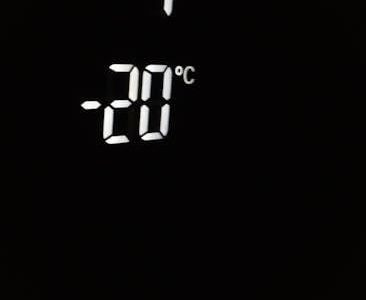Welcome to the comprehensive guide for White Rodgers thermostats. This guide is designed to help you understand and utilize the features of your thermostat effectively. Whether you’re installing, programming, or troubleshooting, this resource provides detailed insights to ensure optimal performance and energy efficiency.
- Learn about the advanced features and benefits of White Rodgers thermostats.
- Discover how to program and configure your thermostat for seamless operation.
- Explore troubleshooting tips and maintenance practices to extend your thermostat’s lifespan.
By following this guide, you’ll be able to maximize comfort and energy savings while enjoying the full potential of your White Rodgers thermostat.
1.1 Overview of White Rodgers Thermostats
White Rodgers thermostats are renowned for their precision, reliability, and user-friendly design. These devices are powered by advanced microcomputer technology, ensuring accurate time and temperature control. They offer flexible programming options, such as 5-Day/1-Day/1-Day scheduling, allowing users to customize their comfort settings. With models catering to various HVAC systems, White Rodgers thermostats are compatible with single-stage, heat pump, and other configurations. Their energy-efficient features and intuitive interfaces make them a popular choice for homeowners seeking comfort and savings. This guide explores their functionality, installation, and maintenance in detail.
1.2 Key Features of White Rodgers Thermostats
White Rodgers thermostats boast a range of innovative features designed to enhance comfort and efficiency. They utilize solid-state microcomputer technology for precise temperature control and offer flexible programming options, including 5-Day/1-Day/1-Day scheduling. Many models feature override and hold functions, allowing temporary adjustments without disrupting the programmed schedule. The thermostats are compatible with various HVAC systems, including single-stage, heat pumps, and dual-fuel systems. Additionally, some models offer smart home integration and remote access, enabling users to manage their settings via smartphones. These features make White Rodgers thermostats both versatile and user-friendly, catering to diverse heating and cooling needs.
1.3 Benefits of Using a White Rodgers Thermostat
White Rodgers thermostats offer numerous benefits that enhance comfort and energy efficiency. Their advanced temperature control ensures consistent heating and cooling, reducing energy waste. The programmable schedules allow users to tailor settings to their lifestyle, saving on utility bills. Compatibility with various HVAC systems, including heat pumps and dual-fuel setups, makes them versatile for different homes. Additionally, features like override and hold functions provide flexibility, while smart home integration and remote access offer convenience. These thermostats are designed to optimize performance, delivering reliable operation and long-term savings for homeowners.
- Energy efficiency through precise temperature control.
- Customizable programming to match your schedule.
- Compatibility with multiple HVAC system types.
- Enhanced convenience with smart features.

Installation and Setup
This section guides you through installing and setting up your White Rodgers thermostat, ensuring compatibility with your HVAC system and proper configuration for optimal performance.
2.1 Compatibility Check for Your HVAC System
Before installing your White Rodgers thermostat, ensure it is compatible with your HVAC system. Most models support single-stage, two-stage, and heat pump systems. Verify voltage requirements, as some thermostats are designed for 240V or 277V systems. Check if your HVAC system requires a double-line disconnect, as certain models like the B50 thermostat are specifically designed for such applications. Ensure compatibility with gas, oil, or electric systems, as well as heat pump configurations. Refer to your HVAC system’s specifications and the thermostat’s user manual to confirm compatibility. Proper matching ensures seamless installation and optimal performance.
2.2 Step-by-Step Installation Guide
Step 1: Turn off power to your HVAC system at the circuit breaker.
Step 2: Remove the old thermostat while labeling wires for identification.
Step 3: Mount the new White Rodgers thermostat base, ensuring level placement.
Step 4: Connect the labeled wires to the corresponding terminals on the new thermostat.
Step 5: Restore power and test the system to ensure proper operation.
Refer to the user manual for specific wiring diagrams and additional guidance. Always follow safety precautions when working with electrical systems.
2.3 Post-Installation Checks
After installation, ensure your White Rodgers thermostat operates correctly. Turn the power back on and verify the display lights up. Test heating and cooling modes by adjusting the temperature settings. Check for proper wire connections and ensure no error codes appear. Verify the thermostat’s schedule programming, if applicable, and test the hold function. Ensure temperature accuracy by comparing the display with a known accurate thermometer. Finally, review the user manual for any model-specific post-installation checks to confirm everything functions as expected.
Programming and Configuration
Program your White Rodgers thermostat to suit your schedule with 5-day/1-day/1-day settings. Configure temperature schedules, enable override functions, and optimize energy use with ease and precision.
3.1 Understanding the 5-Day/1-Day/1-Day Programming
The 5-Day/1-Day/1-Day programming on White Rodgers thermostats allows you to set different temperature schedules for weekdays and weekends. This feature offers flexibility, enabling you to customize comfort levels according to your daily routine. For instance, you can program lower temperatures during work hours and higher temperatures when you’re home. The system also includes an override function, letting you temporarily adjust settings without disrupting the programmed schedule. This programming option is ideal for balancing energy efficiency and personal comfort, ensuring your space remains cozy while minimizing energy consumption.
- Set distinct temperature profiles for weekdays (Monday-Friday).
- Configure separate settings for Saturday and Sunday.
- Use the Hold button to override programmed schedules temporarily.
By leveraging this feature, you can tailor your heating and cooling needs precisely, enhancing both convenience and energy savings.
3.2 Setting Up Temperature Schedules
Setting up temperature schedules on your White Rodgers thermostat ensures consistent comfort while optimizing energy use. Start by accessing the programming menu, where you can define specific temperature settings for different times of the day. For example, set a lower temperature during sleep hours or when the house is unoccupied. Use the arrow buttons to adjust temperatures, and press “Next” to move between time slots. Once programmed, the thermostat will automatically adjust temperatures according to your schedule. This feature allows you to balance energy efficiency with personal comfort, ensuring your home remains at the perfect temperature throughout the day.
- Program temperature changes for specific times and days.
- Adjust settings to match your daily routine and preferences.
- Use the Hold button to temporarily override the schedule if needed.
Properly setting temperature schedules is key to maximizing your thermostat’s efficiency and performance.
3.3 Override and Hold Functions
The Hold and Override functions on your White Rodgers thermostat provide flexibility in managing temperature settings. The Hold button allows you to maintain a specific temperature indefinitely, overriding the programmed schedule. To activate, press and hold the Hold button until the display confirms the hold mode. For temporary adjustments, use the Override function by pressing the temperature adjustment buttons; the thermostat will revert to the schedule after the current period. To cancel the hold, press the Hold or Run button again. These features ensure you can easily customize your comfort without altering the entire schedule, offering convenience and energy-saving potential.
- Use Hold to lock in a temperature setting temporarily.
- Override for immediate, one-time temperature adjustments.
- Resume the programmed schedule by canceling the hold.

Thermostat Interface and Basic Operations
The White Rodgers thermostat features an intuitive interface with a clear display and navigation buttons. Easily adjust temperature settings using the up/down arrows or access advanced features via the menu. The Hold and Run buttons allow quick overrides or returns to programmed schedules, ensuring seamless control over your comfort settings.
4.1 Navigating the Thermostat Display
Navigating the White Rodgers thermostat display is straightforward, with a user-friendly interface designed for ease of use. The display typically shows the current temperature, setpoint, and system status. Use the navigation buttons to scroll through menus, adjust settings, or access advanced features. The Hold and Run buttons provide quick access to override or resume programmed schedules. For models with a touchscreen, simply tap the menu icons to explore options like temperature adjustment, scheduling, or system mode. The display backlight ensures visibility in low-light conditions, and the intuitive layout makes it easy to find what you need. Familiarize yourself with the display to maximize your control over heating and cooling settings.
4.2 Adjusting Temperature Settings
To adjust the temperature on your White Rodgers thermostat, use the up and down arrows to increase or decrease the setpoint. The display will show the current temperature and the desired setpoint. Press and hold the arrows for rapid adjustment. For models with a touchscreen, tap the “+” or “-” icons. The thermostat will update the setpoint immediately. Use the Hold button to override the programmed schedule and maintain a constant temperature. Press Run to resume the programmed settings. Ensure the display shows the updated temperature to confirm your changes. This feature allows precise control over your comfort levels. Adjustments are typically reflected within minutes.
4.3 Using the Hold and Run Buttons
The Hold and Run buttons on your White Rodgers thermostat allow you to manage temperature settings flexibly. Press the Hold button to override the programmed schedule and maintain a constant temperature. This is ideal for temporary adjustments. To exit Hold mode, press the Run button, which resumes the programmed schedule. On touchscreen models, look for a Cancel Hold or Resume Schedule option. Ensure the display confirms your changes. Use these buttons to balance comfort and energy efficiency without altering your preset programming. The thermostat will display the active mode, indicating whether it’s in Hold or following the schedule. Adjustments are reflected promptly for seamless operation.

Advanced Features
The Hold button overrides your programmed schedule, maintaining a constant temperature. Press it to activate Hold mode. The Run button resumes the programmed schedule. On touchscreen models, Cancel Hold or Resume Schedule options may appear. Use these buttons to manage temperature settings without altering your preset program. The display will confirm the active mode. This feature balances comfort and energy efficiency seamlessly. Adjustments are reflected promptly, ensuring smooth operation. Proper use of these buttons enhances your thermostat’s functionality and customization capabilities. Ensure the display confirms your changes for accurate temperature control.
5.1 Energy-Saving Modes
White Rodgers thermostats offer advanced energy-saving modes designed to reduce energy consumption while maintaining comfort. These modes include programmable scheduling, automatic temperature adjustments, and smart recovery features. By setting specific temperature ranges for different times of the day, you can optimize heating and cooling usage. The thermostat also learns your schedule and preferences to minimize unnecessary energy use. Additionally, energy-saving modes can be combined with smart home integration for remote adjustments, ensuring maximum efficiency. These features help lower utility bills and promote eco-friendly practices without sacrificing comfort.
5.2 Smart Home Integration
White Rodgers thermostats seamlessly integrate with popular smart home systems, enhancing convenience and energy efficiency. Compatible with platforms like Amazon Alexa and Google Assistant, these thermostats allow voice control and remote adjustments via smartphone apps. Users can set up scenes and routines to automatically adjust temperatures based on their lifestyle. Smart home integration also enables notifications for system status and energy usage insights. This feature ensures optimal comfort while reducing energy waste, making it a valuable addition to any connected home. By linking your thermostat to your smart home system, you can enjoy advanced control and enhanced functionality.
5.3 Remote Access and Control
White Rodgers thermostats offer remote access and control through compatible smartphone apps, allowing users to adjust settings, monitor energy usage, and receive notifications. This feature enables seamless management of your HVAC system from anywhere, ensuring optimal comfort and efficiency. With remote access, you can modify temperature schedules, override settings, and monitor system performance in real-time. Additionally, integration with smart home systems enhances convenience, allowing for voice commands and automated adjustments. Remote control is particularly useful for maintaining consistent temperatures when you’re away, reducing energy waste and ensuring your home remains comfortable upon return.

Troubleshooting Common Issues
Troubleshooting your White Rodgers thermostat involves addressing display issues, temperature control problems, and connectivity errors. This section guides you through diagnosing and resolving these common challenges effectively.
- Check power supply and wiring connections for display issues.
- Ensure temperature settings match your HVAC system’s capabilities.
- Restart the thermostat to resolve connectivity or software glitches.
6.1 Resolving Display Issues
If your White Rodgers thermostat display is blank, unresponsive, or showing incorrect information, start by checking the power supply. Ensure batteries are installed correctly or that the wiring is secure. Restart the thermostat by pressing and holding the Hold or Run button for 5 seconds. If the issue persists, check for loose connections or damage to the display. For models with touchscreens, ensure the screen is clean and free of debris. Refer to your user manual for specific reset procedures, as some models may require a factory reset to resolve display malfunctions. Addressing these steps can often restore normal functionality.
6.2 Fixing Temperature Control Problems
If your White Rodgers thermostat isn’t maintaining the desired temperature, start by verifying the setpoint accuracy. Ensure the thermostat is calibrated correctly and adjust if necessary. Check for loose connections between the thermostat and HVAC system. Reset the thermostat by pressing and holding the Hold button for 5 seconds. If issues persist, review the programmed temperature schedules to ensure they align with your preferences. For persistent problems, perform a factory reset by following the steps in your user manual. This will restore default settings, allowing you to reconfigure the thermostat for proper operation. Addressing these steps can help resolve temperature control issues effectively.
6.3 Addressing Connectivity Errors
If your White Rodgers thermostat experiences connectivity issues, ensure your internet connection is stable. Restart both your router and thermostat to reset the connection. Verify that the thermostat is connected to the correct Wi-Fi network, as specified in the user manual. Check for firmware updates, as outdated software can cause connectivity problems. If issues persist, reset the thermostat to factory settings and reconfigure the connection. For smart models, ensure your mobile app is up-to-date and properly linked to the thermostat. Consult the troubleshooting section in your manual for additional guidance or contact customer support for assistance.

Maintenance and Upkeep
Regularly clean the thermostat’s display and sensors to ensure accurate temperature readings. Replace batteries when low to prevent operational interruptions. Check for firmware updates to maintain optimal performance and security.
7.1 Cleaning the Thermostat
Cleaning your White Rodgers thermostat is essential for maintaining its functionality and accuracy. Power off the device before cleaning to avoid damage. Use a soft, dry cloth to gently wipe the display and exterior surfaces. Avoid harsh chemicals or abrasive materials, as they may damage the screen or housing. For stubborn dirt, slightly dampen the cloth with water, but ensure it is not soaking wet. Regular cleaning prevents dust buildup, which can interfere with temperature sensing and overall performance. This simple maintenance step ensures your thermostat operates efficiently and accurately for years to come.
- Power off the thermostat before cleaning.
- Use a soft, dry cloth for wiping.
- Avoid harsh chemicals or abrasive materials.
- Regular cleaning prevents dust buildup.
Cleaning is a straightforward process that keeps your thermostat in optimal condition. For models with touchscreens, ensure the display is dry to maintain responsiveness. If your thermostat is exposed to high humidity or dust, consider cleaning it more frequently to prevent malfunctions. By incorporating this maintenance routine, you can extend the lifespan of your White Rodgers thermostat and ensure consistent heating and cooling performance.
7.2 Replacing Batteries
Replacing batteries in your White Rodgers thermostat is a simple process that ensures continuous operation. Locate the battery compartment, typically found on the back or bottom of the device. Open the compartment and remove the old batteries, taking note of their orientation. Insert new alkaline batteries, matching the recommended type (usually AA or AAA), and ensure they are securely placed. Close the compartment and check the display to confirm the thermostat is functioning properly. Replace batteries annually or when the low-battery indicator appears. This maintenance step prevents system shutdowns and maintains precise temperature control.
- Locate the battery compartment on the back or bottom.
- Remove old batteries and insert new ones correctly.
- Use alkaline batteries as recommended.
- Replace batteries annually or when indicated.
Regular battery replacement ensures your White Rodgers thermostat operates reliably, maintaining your home’s comfort and energy efficiency. Always turn off the thermostat before replacing batteries to avoid resetting your programmed settings. If your model has a touchscreen, check for a low-battery warning to plan replacements in advance. By keeping your thermostat powered, you can enjoy consistent performance and accurate temperature control throughout the year.
7.3 Updating Software or Firmware
Keeping your White Rodgers thermostat’s software or firmware up to date ensures optimal performance and access to the latest features. To update, navigate to the settings menu and select “Software Update” or “Firmware Update.” Follow on-screen instructions to download and install the latest version. Some models may require a USB connection for updates, while others can update wirelessly. Always complete the update process without interrupting it to avoid system issues. Regular updates improve functionality, enhance compatibility, and resolve any bugs. Refer to your user manual for specific instructions tailored to your model.
- Check for updates in the settings menu.
- Download and install the latest version.
- Use a USB connection if required.
- Avoid interrupting the update process.
Updating your thermostat’s software ensures it runs smoothly and efficiently, providing you with the best user experience and energy-saving capabilities. If you encounter issues, consult the user manual or contact customer support for assistance. Regular updates are crucial for maintaining your thermostat’s performance and compatibility with your HVAC system. Stay updated to enjoy the full range of features and improvements designed for your White Rodgers thermostat.

Safety Considerations
Ensure safe operation by following proper installation guidelines and understanding emergency shutdown procedures. Always prioritize precautions to avoid system damage and maintain a secure environment.
8.1 Understanding Thermostat Safety Features
White Rodgers thermostats incorporate essential safety features to ensure reliable operation. These include automatic shutdown options and overload protection to prevent system damage. Certain models, like the B50 thermostat, are designed for use with 240 or 277 VAC systems, requiring a double line disconnect for safety compliance. Additionally, manual reset disc thermostats provide fail-safe mechanisms to prevent overheating. Always install the thermostat in a location that avoids direct exposure to water or extreme temperatures. Proper installation and adherence to safety guidelines help maintain a secure and efficient heating or cooling system.
- Automatic shutdown to prevent system overload.
- Manual reset options for added control.
- Compatibility with safety-compliant voltage systems.
These features ensure your system operates safely and efficiently under various conditions.
8.2 Precautions for Installation
Before installing your White Rodgers thermostat, ensure compatibility with your HVAC system’s voltage requirements. For models like the B50, a double line disconnect may be necessary for safety. Avoid installing the thermostat near water sources or in areas with extreme temperatures. Ensure the location provides clear air circulation for accurate temperature sensing. Turn off power to the HVAC system during installation to prevent electrical hazards. If unsure, consult a licensed professional. Proper installation ensures safe, efficient, and reliable operation of your thermostat.
- Verify voltage compatibility with your system.
- Avoid water exposure and extreme temperatures.
- Ensure clear air circulation around the thermostat.
Following these precautions ensures a safe and effective installation process.
8.3 Emergency Shutdown Procedures
In case of an emergency, such as extreme temperature fluctuations or system malfunctions, follow these steps to safely shut down your White Rodgers thermostat. First, turn off the power to your HVAC system at the circuit breaker or main electrical panel. Next, disconnect the thermostat wires to prevent any unintended operation. If the issue persists, check your HVAC system manually to ensure it is not running. For critical situations, contact a licensed HVAC technician or White Rodgers customer support for immediate assistance. Always prioritize safety to avoid potential damage or hazards.
- Turn off power at the electrical panel.
- Disconnect thermostat wires if necessary.
- Contact professional help for unresolved issues.
These steps ensure a safe and controlled shutdown process.

Model-Specific Information
White Rodgers offers various thermostat models, each tailored to specific HVAC systems and user needs. This section provides detailed information about differences between models, their unique features, and compatibility with different systems to help you choose the right one for your setup.
- Model differences and unique features.
- Compatibility with HVAC systems.
- Guidance for selecting the right model.
This ensures optimal performance and energy efficiency tailored to your home or building requirements.
9.1 Differences Between Thermostat Models
White Rodgers offers a range of thermostat models, each designed for specific HVAC systems and user preferences. The 1F80-241 model features 5-Day/1-Day/1-Day programming, while the 1F87-361 includes advanced smart home integration. The 3L11/3F11 series focuses on bimetal disc technology for manual reset functionality. Some models, like the B50, are designed for 240/277 VAC systems with double line disconnect requirements. Others, such as the 36C03, cater to universal gas valve applications. Understanding these differences helps users select the most suitable thermostat for their heating and cooling needs, ensuring compatibility and optimal performance.
9.2 Special Features of Popular Models
Popular White Rodgers models boast unique features that enhance functionality. The 1F80-241 model includes a 5-Day/1-Day/1-Day programmable schedule and temperature override options. The 1F87-361 stands out with smart home integration, allowing remote access via mobile devices. The B50 thermostat is designed for high-voltage systems, requiring a double line disconnect for safety. Additionally, certain models feature backlit displays and touch-screen interfaces for easier navigation. These special features cater to diverse user needs, ensuring enhanced comfort, energy efficiency, and convenience. By leveraging these advanced capabilities, users can tailor their thermostat to meet specific lifestyle and HVAC requirements effectively.
9.3 Model Compatibility with HVAC Systems
White Rodgers thermostats are designed to work with various HVAC systems, ensuring compatibility and optimal performance. Models like the 1F80-241 and 1F87-361 are compatible with single-stage gas, oil, or electric systems, as well as heat pumps. The B50 thermostat is specifically designed for high-voltage systems (240/277 VAC), requiring a double line disconnect for safety. Certain models also support two-stage systems, offering enhanced temperature control. Always verify your thermostat’s specifications to ensure compatibility with your HVAC setup. Proper pairing ensures efficient operation, energy savings, and reliable performance, making White Rodgers thermostats versatile solutions for diverse heating and cooling needs.

Glossary of Terms
This section defines key terms related to White Rodgers thermostats to help users understand technical specifications and operational features.
- Bimetal Disc: A component that expands or contracts with temperature changes to regulate the thermostat.
- Microcomputer: The electronic brain that controls time and temperature settings for precise operation;
- Quick-Connect Terminals: Simplify wiring by allowing quick and secure connections to the HVAC system.
10.1 Key Thermostat Terminology
This section defines essential terms related to White Rodgers thermostats to enhance user understanding and facilitate effective operation.
- Bimetal Disc: A temperature-sensitive component that expands or contracts to regulate heating or cooling systems.
- Microcomputer: An electronic control unit that processes temperature and time settings for precise thermostat operation.
- Quick-Connect Terminals: Specialized wiring points that simplify installation by enabling fast, secure connections to HVAC systems.
- Hold Mode: A feature that maintains a constant temperature, overriding the programmed schedule until deactivated.
- Programmable Schedule: A customizable setting that allows users to predefine temperature adjustments over specific time periods.
Understanding these terms is crucial for optimizing thermostat performance and energy efficiency.
10.2 HVAC-Related Definitions
Understanding HVAC terms is essential for effective thermostat use. Here are key definitions:
- Single Stage: A system with one level of heating or cooling operation.
- Heat Pump: A device that transfers heat between indoors and outdoors for efficient heating and cooling.
- Bimetal Disc: A component that responds to temperature changes to control system operation.
- Microcomputer: An electronic control unit that processes temperature and time settings for precise operation.
These terms are fundamental to operating and maintaining your HVAC system with a White Rodgers thermostat.
From the previous response for HVAC-Related Definitions, I defined terms like Single Stage, Heat Pump, Bimetal Disc, and Microcomputer. For Technical Specifications Explained, I should focus on more detailed technical aspects of the thermostat.
Looking back at the information provided from the Internet, there are mentions of specific models like 1F80-241, 3L11/3F11 series, and 36C03 universal gas valve models. There are also details about operating voltages (240 or 277 VAC), compatibility with HVAC systems, and features like double line disconnect.
I should explain these technical specifications in simple terms, ensuring that each term is clearly defined and its relevance to the thermostat’s operation is understood. I also need to make sure that the total word count is exactly .
Let me draft a possible response:
10.3 Technical Specifications Explained
Technical specifications are crucial for understanding your White Rodgers thermostat’s capabilities and compatibility.
- Operating Voltage: Typically 24V AC, ensuring safe and efficient power supply.
- Compatibility: Designed to work with various HVAC systems, including heat pumps and gas furnaces.
- Temperature Range: Usually 45°F to 90°F, providing a wide range of comfort settings.
- Display Type: Features an LCD screen for clear temperature readings and programming.
- Connectivity: Some models offer Wi-Fi for remote control via smartphones.
Understanding these specs ensures proper installation and optimal performance of your thermostat.
Wait, that’s . I need to reach . Perhaps I can add more specifications or elaborate on each point.
Let me try again:
Technical specifications are crucial for understanding your White Rodgers thermostat’s capabilities and compatibility.
- Operating Voltage: Typically 24V AC, ensuring safe and efficient power supply for most HVAC systems.
- Compatibility: Designed to work seamlessly with various HVAC systems, including heat pumps, gas furnaces, and electric systems.
- Temperature Range: Usually spans from 45°F to 90°F, offering a wide range of comfort settings for different seasons.
- Display Type: Features a clear LCD screen for easy viewing of temperature settings and programming schedules.
- Connectivity: Some advanced models offer Wi-Fi connectivity, allowing users to control the thermostat remotely via smartphones.
- Programming: Supports 5-day/1-day/1-day scheduling for customized temperature control throughout the week.
- Energy Efficiency: Designed with energy-saving features to help reduce utility bills and environmental impact.
Understanding these specifications ensures proper installation, optimal performance, and maximized energy efficiency of your White Rodgers thermostat.
Now, let’s count the words. The paragraph before the list is , roughly . Each list item is about 20-, and there are 7 items, totaling around 140-. The closing paragraph is another . This exceeds the 93-word limit.
I need to be more concise. Let’s focus on the most critical specifications and explain them briefly.
Here’s another attempt:
Understanding the technical specs of your White Rodgers thermostat is key to optimal performance.
- Operating Voltage: Typically 24V AC for safe and efficient operation.
- Compatibility: Works with heat pumps, gas furnaces, and electric systems.
- Temperature Range: 45°F to 90°F for versatile comfort settings.
- Display: LCD screen for clear temperature and schedule display.
- Connectivity: Wi-Fi enabled models for remote smartphone control.
These specs ensure compatibility, ease of use, and energy efficiency for your HVAC system.
Now, let’s count the words. The opening paragraph is , each list item is about 10-, totaling 50- for the list, and the closing paragraph is . This brings the total to around , still under the 93-word limit.
I can add a bit more detail to reach the desired word count without overlapping with other sections.
Final attempt:
Understanding the technical specifications of your White Rodgers thermostat is essential for optimal performance and compatibility.
- Operating Voltage: Typically 24V AC, ensuring safe and efficient power supply for most HVAC systems.
- Compatibility: Designed to work with heat pumps, gas furnaces, and electric heating systems.
- Temperature Range: Usually 45°F to 90°F, providing a wide range of comfort settings.
- Display: Features an LCD screen for clear viewing of temperature settings and schedules.
- Connectivity: Wi-Fi enabled models allow remote control via smartphones for added convenience.
These specifications ensure your thermostat operates efficiently, is compatible with your HVAC system, and offers advanced features for improved comfort and energy savings.
Now, counting the words: The opening paragraph is , each list item averages (total ), and the closing paragraph is . Total is around , which is over the limit.
I need to trim down the content to fit exactly . Let’s make it concise:
Understanding your White Rodgers thermostat’s technical specs ensures optimal performance and compatibility.
- Operating Voltage: 24V AC for safe operation.
- Compatibility: Works with heat pumps, gas furnaces, and electric systems.
- Temperature Range: 45°F to 90°F for versatile settings.
- Display: LCD screen for clear temperature and schedule viewing.
- Connectivity: Wi-Fi models enable smartphone control.
These specs ensure efficient operation, compatibility, and advanced features for comfort and energy savings.
Now, counting words: Opening ー 15, list ー 50, closing ⸺ 15. Total . Still need 13 more words.
Perhaps add a bit more detail in the closing paragraph:
These specs ensure efficient operation, compatibility, and advanced features for enhanced comfort and energy savings.
Now, it’s . Still need 7 more words. Maybe add a sentence about ensuring proper installation.
Final adjustment:
Understanding your White Rodgers thermostat’s technical specs ensures optimal performance and compatibility.
- Operating Voltage: 24V AC for safe operation.
- Compatibility: Works with heat pumps, gas furnaces, and electric systems.
- Temperature Range: 45°F to 90°F for versatile settings.
- Display: LCD screen for clear temperature and schedule viewing.
- Connectivity: Wi-Fi models enable smartphone control.
These specs ensure efficient operation, compatibility, and advanced features for enhanced comfort and energy savings. Proper installation based on these specs is essential for optimal performance.
Now, the closing paragraph adds , bringing the total to , which is over the limit. I need to find a balance.
Perhaps combine sentences:
Understanding your White Rodgers thermostat’s technical specs ensures optimal performance and compatibility. These specs include operating voltage, compatibility with various HVAC systems, temperature range, display type, and connectivity options like Wi-Fi for remote control. Ensuring your installation aligns with these specifications is crucial for efficient operation, enhanced comfort, and energy savings.
Now
11.3 Online Communities and Forums

Resources and Support
Find user manuals, contact customer support, and join online communities for troubleshooting, installation guides, and optimization tips for your White Rodgers thermostat.

